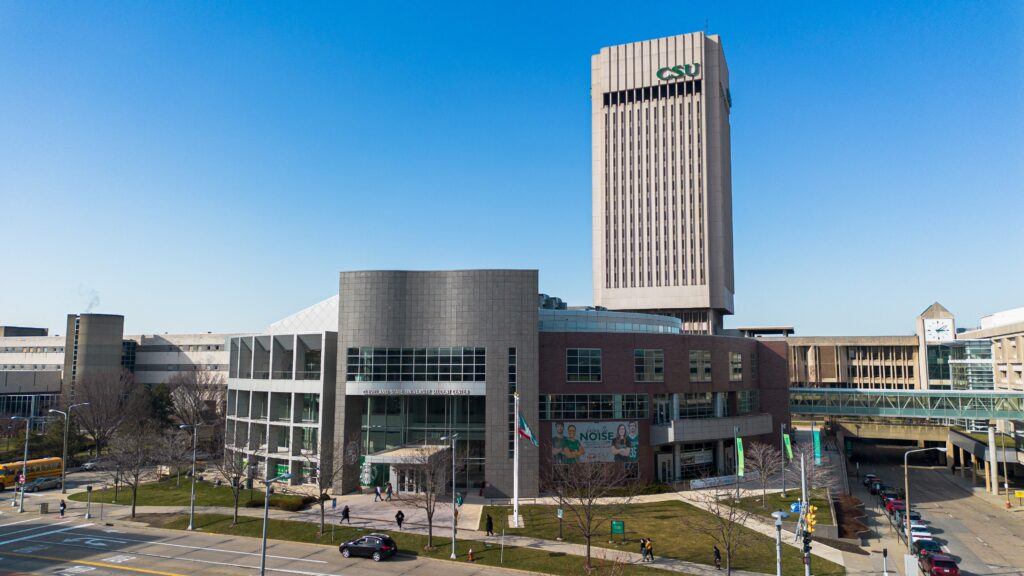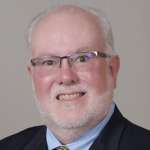Rick Thomas on the Case for Professional Partners in Campus Life Management
 Student centers are no longer just the living room of campus. They have become essential platforms for student success, institutional identity, and institutional resilience. Today’s campus centers support recruitment, retention, wellness, inclusion, and student engagement, all while serving as one of the most visible representations of a university’s mission.
Student centers are no longer just the living room of campus. They have become essential platforms for student success, institutional identity, and institutional resilience. Today’s campus centers support recruitment, retention, wellness, inclusion, and student engagement, all while serving as one of the most visible representations of a university’s mission.
But as these spaces take on more responsibility, the question becomes: how do institutions ensure they’re delivering on that promise? Many are discovering that traditional operational models can’t keep pace with changing expectations, limited resources, and the strategic demands of modern student life.
Rick Thomas on Student Center Expertise and Strategic Partnerships
Rick Thomas has spent his career in student centers, guiding their growth, solving their challenges, and helping institutions unlock their full potential. A nationally recognized expert in auxiliary operations and a senior consultant with CENTERS and Brailsford & Dunlavey, Rick brings nearly four decades of higher education experience, including leadership roles at the University of Wisconsin – Milwaukee, DePaul University, Northwestern, and the Illinois Institute of Technology.
He has seen the pressures facing campus life facilities up close. Strained resources, evolving student needs, and rising expectations have turned once-stable operations into complex ecosystems. For Rick, the key to navigating this complexity is partnering with an operational expert who can align facilities with institutional mission, campus culture, and measurable performance.
The Challenge of Operating Today’s Contemporary Student Center
Student centers today encompass operations, culture, and strategy. They’re expected to do it all: serve students, host events, generate revenue, promote inclusion, expand the university brand, and enhance town-gown relations. Meanwhile, familiar anchor tenants like bookstores and food courts are changing or disappearing, making it harder to generate predictable revenue.
Add to that:
- The rise of esports, affinity-based student groups, and 24/7 engagement
- Tech-enabled expectations around space booking and services
- Growing demand for inclusive, trauma-informed, and adaptable environments
And yet, many student centers are still operated by teams of just one or two full-time staff. This mismatch leads to service gaps, employee burnout, and underutilized space.
These shifts still require expert facility management. But they also demand integrated strategies, agile operations, and effective leadership.
Why Outsourcing Student Center Operations Delivers Strategic Outcomes
Campus leaders understand what effective student center operations look like but achieving them amid competing priorities is increasingly complex.
- More consistent access and engagement for students
- Higher utilization of space and services
- Transparent, mission-first budgeting
- Improved performance on KPIs like Net Promoter Score (NPS), cost recovery, and scheduling efficiency
- Reduced friction between student life and administrative priorities
These results don’t come from a templated approach. They come from custom models built on each institution’s priorities.
“Performance isn’t just about numbers,” Rick stresses. “It’s about trust. It’s about a student walking into the union and feeling like this space belongs to them every hour of the day.”
Case Study: Outsourced Student Center Management at Cleveland State University
At Cleveland State University, a mid-sized public institution, the student center was underperforming on all fronts with underutilized spaces, low engagement, and operational management that wasn’t meeting expectations.
The university knew the student center wasn’t meeting its potential, but it wasn’t clear where to start. To help clarify the path forward, Cleveland State brought in CENTERS to conduct a Strategic Asset Value (SAV) process. That process became the foundation for a long-term management partnership focused on aligning the facility with the university’s goals for engagement, operations, and impact.
Since 2022 CENTERS has helped guide both strategic upgrades and day-to-day operations. The team has supported everything from major capital improvement projects and sustainability initiatives to brand refreshes and marketing strategy, bridging gaps that a campus team alone couldn’t address.
Results speak for themselves:
- Maintenance, custodial, and janitorial services exceeded standards within the first 3–4 months
- Furniture and fixture enhancements, including new seating areas, a wellness space with massage chairs and nap pods, an internal radio station, and updated recycling and waste management receptacles
- Interior design refresh, including updated digital wayfinding, branded interior graphics, digital signage, and entry mats
- Space usage has risen significantly
- Student satisfaction scores have improved significantly
- Operating budgets have been aligned with both mission and fiscal goals
The change wasn’t only cosmetic—it was atmospheric, and sustainable.
From Clutter to Clarity: The SAV Process
At the core of CENTERS’ model is the Strategic Asset Value (SAV) process. This is a collaborative visioning initiative that identifies the criteria required for operating success and alignment with university priorities.
SAV begins with discovery and stakeholder interviews, leading to a prioritized roadmap of values and outcomes. From there, CENTERS builds tailored operating plans including staffing models, budget, and performance benchmarks that reflect what matters most to the campus.
Rick notes, “Too often, campus leaders inherit an operational model that no longer reflects the institution’s goals. SAV resets the table. It puts the mission back in the driver’s seat.”
The result: alignment between expectations and execution, and a clear line of sight between mission and operations.
Scaling Impact Through Bundled Campus Center Management
This approach is not limited to a single asset like a student center. CENTERS’ clients often realize even more value through a bundled service model, in which multiple campus life assets are outsourced under one contract.
The institution benefits from:
- Shared systems and processes
- Inter-asset economies of scale
- Streamlined staffing and resource allocation
- Cross-campus benchmarking and data integration
- Centralized marketing, recruiting, and engagement strategies
- CENTERS’ expertise and innovation
“You can outsource a single campus life facility and see results,” Rick says. “Or you can unlock even greater impact by partnering with CENTERS to manage your entire portfolio. That’s where the real value lives.”
Preserving Campus Culture in Outsourced Student Center Operations
Outsourcing a student center doesn’t mean outsourcing your identity. In fact, when done right, it protects and elevates it.
“We don’t displace, we upskill,” Rick emphasizes. “We work with existing staff, elevate their training, and help the campus define what success looks like. This isn’t replacement, it’s reinforcement.”
Through partnerships with CENTERS, institutions maintain full decision-making authority while gaining access to operational experts who help bring their values to life. CENTERS adapts to your campus culture, becoming an extension of your institution.
As Rick states, “Every campus has its own heartbeat. Our job is to listen to it and build around it.”
Traditions are preserved. Access is expanded. And internal teams often find themselves more empowered.
Adapting for the Future of Student Center Operations
Outsourcing creates flexibility. As higher ed continues to evolve, campuses need to do more with less without compromising the student experience.
By shifting the burden of daily operations to a trusted partner, institutions gain:
- Agility in programming and staffing
- Access to national trends and benchmarking
- Expertise in compliance, budgeting, and scheduling
Some CENTERS partnerships have resulted in a 15–20% cost savings while increasing student engagement and enhancing staff retention. It allows staff and administration to focus more on leadership and vision, rather than logistics—without giving up control.
“Higher ed leaders need to be focused on strategy, student outcomes, and institutional resilience,” Rick emphasizes. “They shouldn’t be chasing down furniture vendors or resolving audiovisual issues.”
Partnership as a Path to Performance
As colleges and universities navigate a future shaped by complexity and constrained resources, student centers remain critical assets. But operating them well requires more than tradition and good intentions. It requires expertise, alignment, and execution.
Outsourcing student center operations through a strategic partner like CENTERS offers a way forward. It’s not a loss control or simply cutting costs, it’s about a commitment to excellence and increasing value. Most importantly, it’s a way to keep mission at the center of every operational decision.
Ready to explore how strategic outsourcing could strengthen your student center and your mission? Let’s start the conversation.

 Matt Schmiedl
Matt Schmiedl